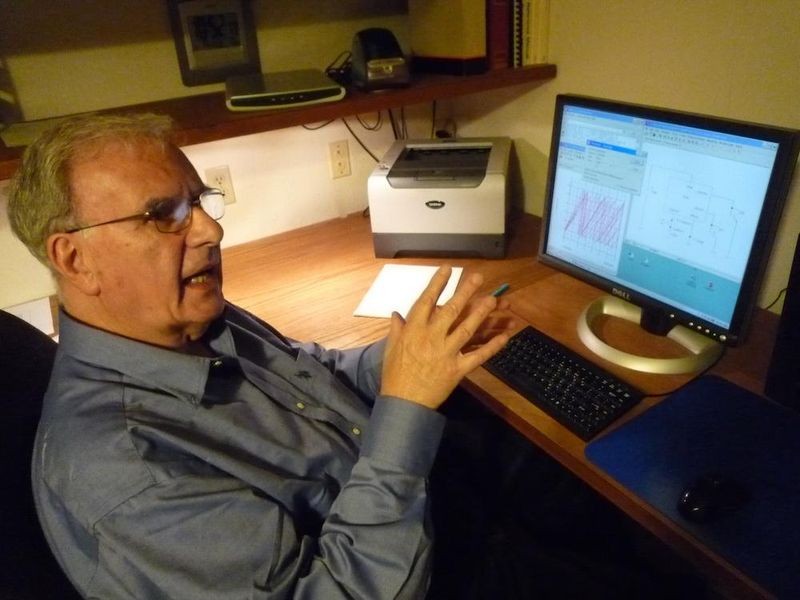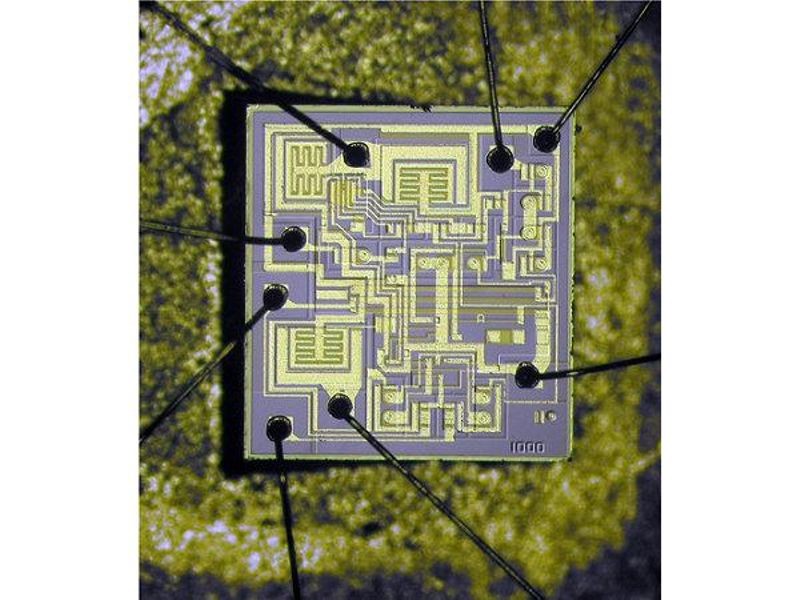

Hans Camenzind, Wizard of Analog
Ninety-nine percent of modern computers and control systems rely on digital techniques for internal operation. However, these devices must serve the real world that is one-hundred percent analog. The phenomena of heat, light, and sound, for example, are measured as continuously varying analog signals. These must be converted into ones and zeros for processing by a digital system and then back to analog to implement the function of a thermostat, dim a light, or drive a loudspeaker.
The analog integrated circuits (ICs) that perform these tasks are far less complex in terms of the numbers of transistors on a silicon chip than their digital brethren. However, due the precision demands placed on them, the design of analog chips has long been viewed as being as much an art as a science. Coming up with creative approaches to these challenges has nurtured a generation of highly-skilled engineers. A select few circuit designers who have delivered particularly elegant solutions have been accorded rock star-like celebrity by their peers. A recent exhibit at the Museum, An Analog Life: Remembering Jim Williams, honored one such wizard of analog.
When we designed the Digital Logic galley of the Revolution exhibit, we included a nod to the importance of these analog pioneers to the overall world of computing. I knew that, with space for just six people to represent their art, the choice would be difficult. In fact, based on the extraordinary success of their flagship products, the first two came easily. Many know about Robert Widlar for his outrageous personality and wild antics as much as his game-changing operational amplifiers. On the other hand, few have heard of Hans Camezind, father of the most widely used analog chip of all time – the 555 timer.

NE555 timer and multivibrator chip, Signetics, 1971. Designed by Hans Camenzind.
In 2010 I contacted Hans to ask for a microphotograph of the chip for the exhibit. In addition to the photo he graciously donated one of his 555 devices from the prototype run to the Museum collection. When I heard that he had passed away on August 8, 2012, I decided to learn more about Hans and his career.
Hans Camenzind was born in Switzerland and earned a BSEE from Boston’s Northeastern University in 1978. Following work at pioneering Massachusetts chip companies, he moved to Silicon Valley in 1968 where he worked in the analog circuit research department of Signetics, one of the first start-up companies to focus exclusively on integrated circuits. He left the company to found Interdesign, Inc., in Sunnyvale in 1971 where he designed the 555 timer under contract to his former employer. Sales of that little chip, that used just 23 transistors, 15 resistors and two diodes, now run in the billions of units and is still in production after more than 40 years. After selling Interdesign in 1978, he ran his own consulting company. Over his career, Camenzind designed more than 150 chips, was holder of more than 20 patents, and wrote numerous articles and books on circuit and system techniques, including Designing Analog Chips, known to many as “the bible” of analog design.
I called Alan Grebene, another respected designer and founder of analog specialty house Exar. He described their long “tangled” relationship as polite and respectful of each other’s professional skills but colored with competitive tension. It started before they met, after Alan submitted a contribution to a technical journal in 1967. The next issue printed a sharp rebuttal to his submission – written by one Hans Camenzind. When Alan joined Signetics in 1968, to his surprise his new office mate was the author of that critique. They worked together on a number of products, including a popular phase-locked loop chip, where Hans contributed the concept and Alan the circuit design. Bitten by the entrepreneurial bug of early 1970s Silicon Valley, both left to start their own companies within a few months of each other. Their paths continued to cross over the years as Interdesign competed with Exar in the market. Later the competition extended to their roles as expert witnesses in a bitter trade secrets court battle when Alan represented one side and Hans the other.
Derek Bray, manager of the consumer applications department at Fairchild Semiconductor in the late 1960s, told me that he had interviewed Hans at one point and recognized him as an extremely capable designer. Several years later, the families met as neighbors on Hawthorne Avenue in Los Altos. In 1976, Derek joined Interdesign as engineering manager. He described Hans’s leadership of the company as being extremely hands-on with technical issues but less so with operational aspects. He had firm ideas about how the job should be done and left no doubt as to who was in charge. Derek sensed that while Hans was an early proponent of Silicon Valley ‘relaxed Friday’ camaraderie, and went to great lengths to spend social time with his employees, he preferred to escape to his own space. This continued after retirement when Hans, who, while still close to his wife and children, set up a lab and pied-à-terre in San Francisco. He spent several days a week in the city involved with educational programs at San Francisco State University and working on projects writing his books, including Much Ado About Almost Nothing, a history of the electron.
Hans was also a friend and supporter of the Computer History Museum.
RIP Hans Camenzind, Wizard of Analog extraordinaire.